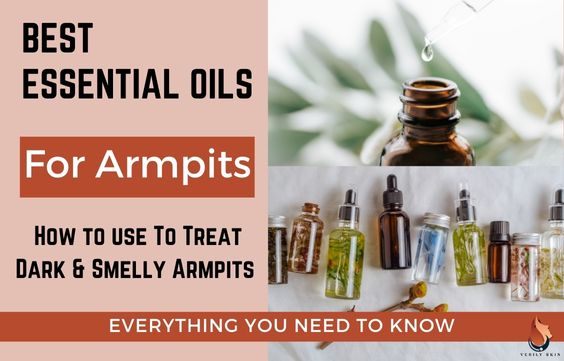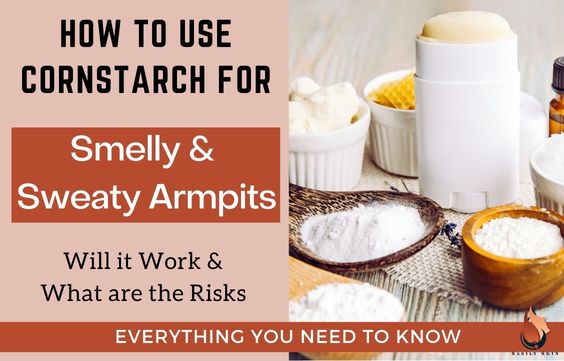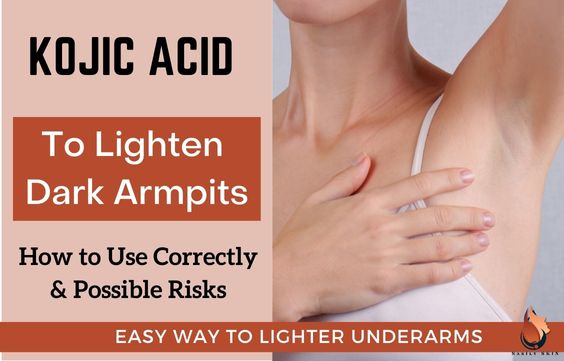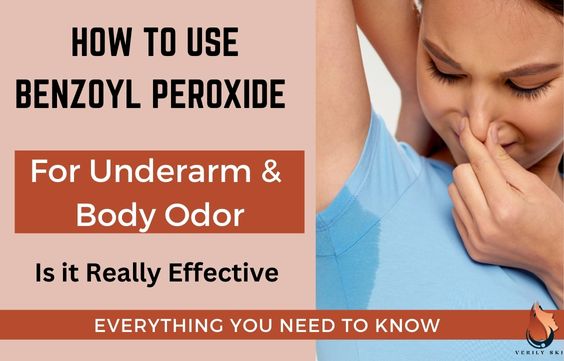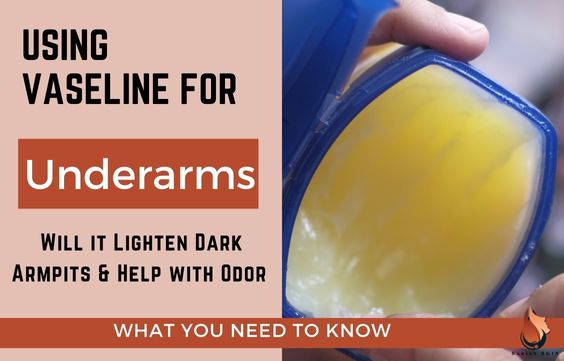Clogged Armpit Pores: Causes, How to Spot & Treat
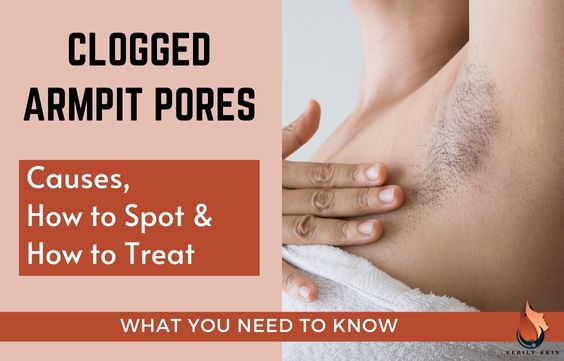
Clogged pores can be a pain, but it becomes even worse when said pores are in your armpit.
Our armpits do not only have regular pores, but also sweat glands and hair follicles, all of which can get blocked.
Can Sweat Glands In The Armpit Get Clogged
Yes, the pores, hair follicles, and nearby apocrine sweat glands in the armpit can become clogged, it is called Hidradenitis.
These clogged pores can become inflamed and/or infected.
When the sweat glands, hair follicle and/or pore become blocked, it is unable to get rid of the sweat and material inside, which eventually builds up. This creates a breeding ground for bacteria which induces inflammation.
The area becomes swollen and tender, forming a cyst like a large, thick pimple that eventually bursts. When this happens, the debris and bacteria spread to other pores, hair follicles and/or sweat glands and the process starts over again.
This can also affect the groin, buttocks, and under the breasts.
How Often to Exfoliate or Scrub Underarms for Best Results
Video Showing What is Hidradenitis Suppurativa (HS)
Signs Of Clogged Pores In The Armpit
The main sign of a clogged armpit pore, hair follicle and/or sweat gland is the appearance of a painful cyst in the area.
However, other signs may include:
- Persistent and sometimes severe itching
- Pain and tenderness
- Bad smell from the bumps that burst and leak fluid
- Scarring
- Sinus tracts (those “canals” that join each follicle)
- Recurring infections
- Depression and withdrawal from social activities
The problem often begins with a solid lump, about the size of a pea, that forms in one location. After a few hours or days, this lump will either go or burst and release pus.
Afterward, more lumps frequently form close to the first one and spread if not treated.
Additionally, tiny crevices under the skin known as sinus tracts develop and pus-filled eruptions appear on the surface.
Unfortunately, these lumps and eruptions are very painful, uncomfortable and often very itchy.
Related Article – Using Vaseline For Underarms- to Lighten & Help with Odor
What Causes Clogged Armpit Pores
Doctors and researchers do not know for sure what causes blocked armpit pores, hair follicles and/or sweat glands.
However, the following factors may contribute to the condition:
- Hormones
- Immune System Response
- Genetics
- Nicotine
Please note that Hidradenitis:
- Does NOT happen because you do not wash your armpits well enough (some people still get this regardless of how well and how often they wash)
- Cannot be spread from person to person
Additionally, certain things can trigger a breakout or flareup like:
- Being overweight
- Getting your period (for women)
- Hormone changes
- Smoking
- Sweating
- Heat
Related Article – Best Salt Crystal Deodorants: Risks & How Good Are They
How Do You Get Armpit Hidradenitis Diagnosed
You will need to be examined by a doctor (usually a dermatologist) to diagnose Hidradenitis. However, there is no particular test to diagnose this problem.
If you notice that you have any of the signs and/or symptoms mentioned, consult your dermatologist. They will:
- Ask you whether anyone in your family has similar problems
- Physically examine your body and skin
- Examine your armpits in detail
- Ask about the bumps or lesions that you have (when they first started, how they feel, how long they last, what makes them worse or better. etc)
- Do a blood test to help confirm the diagnosis
- Possibly ask you to do a biopsy to rule out other possible skin conditions
Video: What is Hidradenitis Suppurativa (Everything you need to know about the diagnosis from a medical perspective)
How Do You Treat Clogged Armpit Pores
Hidradenitis (clogged armpit pores) can be treated with the guidance of a doctor.
However, keep in mind that it is a long-term condition that often reoccurs and is sometimes difficult to treat.
Early on, medication may be used to manage it. However, in situations that are severe or persistent, surgery might be necessary.
Mild Cases
For a mildly affected person, some remedies may include:
- Spend 10 minutes at a time in a warm bath or using warm compresses on the afflicted region.
- To decrease or destroy germs, use topical cleaning products such as antibacterial soaps, antiseptics, and acne washes.
- Utilize anti-inflammatory drugs such celecoxib (Celebrex®), ibuprofen (Advil®, Motrin®), and naproxen (Aleve®) with your doctor’s guidance.
- To avoid garments rubbing against your skin, dress loosely.
- Keep your weight at a healthy level. The skin in the afflicted area is more irritated by friction when carrying excess weight.
Moderate Cases
For more moderate cases where painful, stubborn bumps and lesions are present medications may be necessary:
- Prednisone and other corticosteroids which used to treat inflammation and discomfort.
- Anti-inflammatories – for example, celecoxib (Celebrex®), ibuprofen (Advil®, Motrin®), and naproxen (Aleve®).
- Antibiotics like erythromycin, amoxicillin/clavulanate potassium, tetracycline, etc. Erythromycin-based topical creams are also occasionally recommended.
- Other pharmaceuticals like birth control pills can also be tried to address the hormonal cause of hidradenitis, as well as retinoids to address acne.
Note: The Food and Drug Administration has approved the first and only biologic drug for the treatment of moderate to severe hidradenitis. The drug is called Adalimumab (Humira®).
Severe Cases
Severe cases of Hidradenitis are usually treated surgically:
- Abscess Drainage – the bump or lesion is cut open under local anesthesia and drained of the pus and debris
- Laser removal – a laser is used to clear deep-seated blockages
- Deroofing – bumps, and lesions are reduced to scar tissue
- Excision and skin grafting – larger areas of skin containing the lesions and other scar tissue are removed and a skin graft from another healthy area of the body is used to replace them.
Common Questions About Clogged Armpit Pores
Can deodorant clog armpit pores?
Yes. Traditional deodorants and antiperspirants contain aluminum that prevents us from sweating.
However, in doing so the aluminum can also block pores, hair follicles and sweat glands, causing a breakout or Hidradenitis.
Can you get clogged armpit pores if you do not bathe regularly?
Clogged armpit pores have not been linked to hygiene as a specific cause. However, keeping your armpits clean and well exfoliated will undoubtedly help to prevent clogging of the pores, hair follicles and/or sweat glands.
How to Exfoliate Armpits – 6 Best DIY Easy Natural Scrubs
Do clogged armpit pores smell?
Yes. Clogged armpit pores can produce an unpleasant smell. There is bacteria, sweat, skin cells, inflammatory cells and other debris (sometimes hair and oil) trapped in the cysts under your arms when your pores become clogged.
When the bacteria react with all the other things, it produces a smell that is most noticeable when the cysts burst and start to leak.
Why Armpits Smell Even With Deodorant & Bathing: How to fix
Are clogged armpit pores painful?
Yes. Clogged armpit pores can be painful and uncomfortable. Think of them like little abscesses under your arms. Pain is associated with swelling and inflammation which will be made worse by constant movement and friction.
What can I do to relieve painful clogged armpit pores?
Things you can do to at least help relieve the painful bumps under your arms include:
- For 10 minutes, apply a warm compress (wet a washcloth in warm water) to the region to reduce swelling and pain. Alternatively, you can also soak a tea bag in warm water and place it over the affected region for the same 10 minutes.
- Sit in a warm bath. Spend 10 to 15 minutes relaxing in the water with your armpits submerged.
- Use an NSAID pain treatment available over the counter, such as ibuprofen.
How do I get rid of clogged armpit pores?
Apart from previously mentioned treatment options, there are other things that you can do to help:
- Wear loose clothing – this will avoid excess sweating, friction and heat
- Quit smoking – smoking and nicotine have been linked to triggers for this condition
- Lose extra weight if you can – more friction and irritation of the underarm area occurs when there is excess skin and weight in the area
- Stay as cool as you can
- Do not shave if you already have bumps under your arms
- Keep your armpits clean and well taken care of – bathe and wash your armpits regularly, exfoliate, and moisturize well.
- Use an acne wash or cleanser on your underarms, especially if you are generally acne prone in other areas
Related Articles:
How Often to Exfoliate or Scrub Underarms for Best Results
How to Exfoliate Armpits – 6 Best DIY Easy Natural Scrubs
Using Rose Water to Lighten Dark Armpits & For Body Odor
Using Benzoyl Peroxide For Underarm & Body Odor: A Guide
Sources:
Blocked Sweat Glands: Causes and Symptoms for Hidradenitis Suppurativa
Hidradenitis Suppurativa: Symptoms, Causes, Treatments
Inflamed/Infected Sweat Glands (Hidradenitis) | Johns Hopkins Medicine

